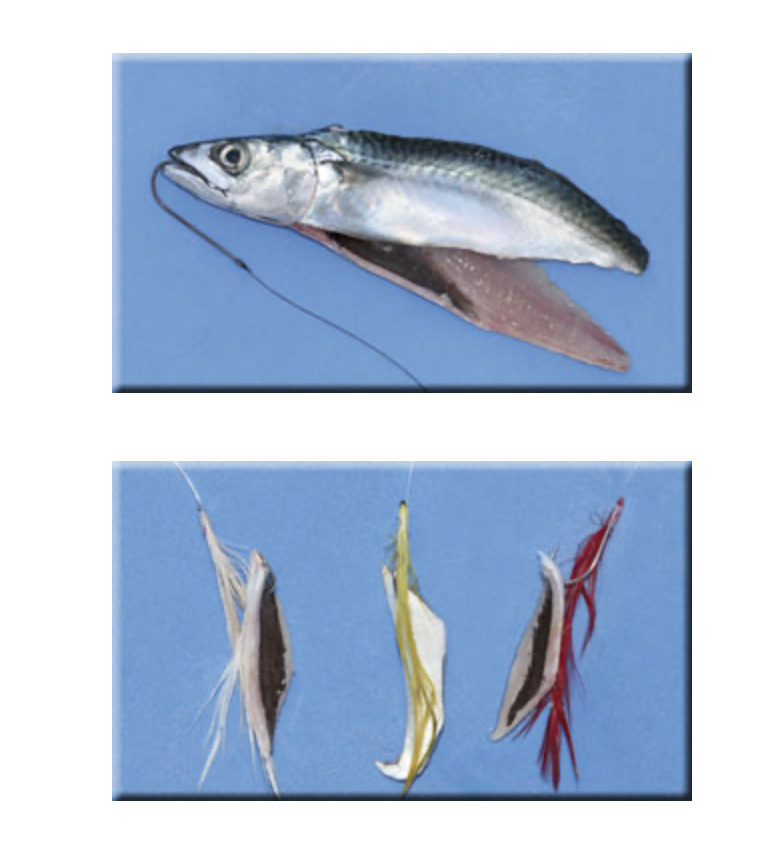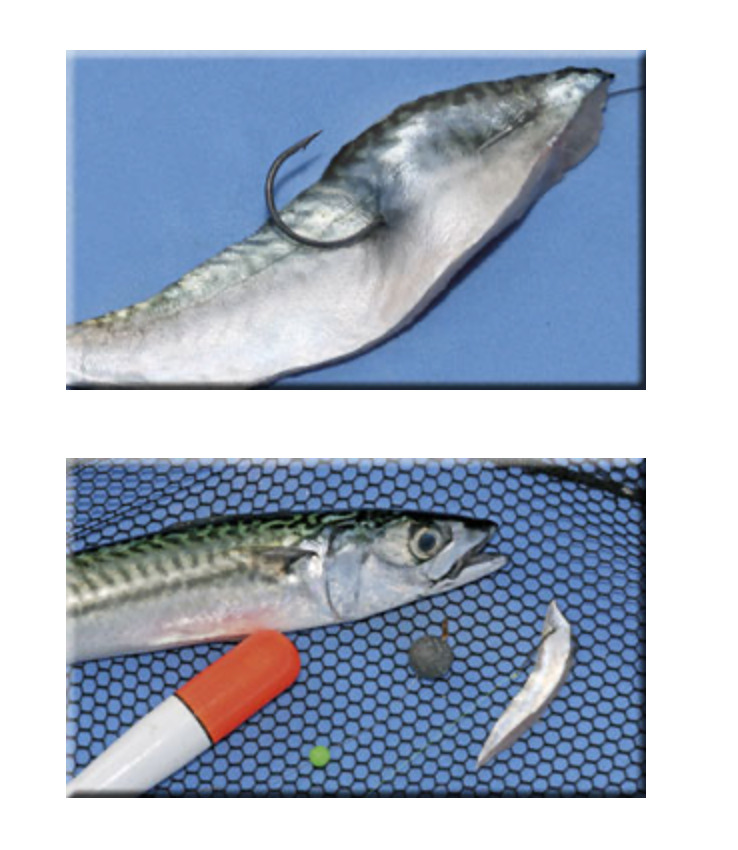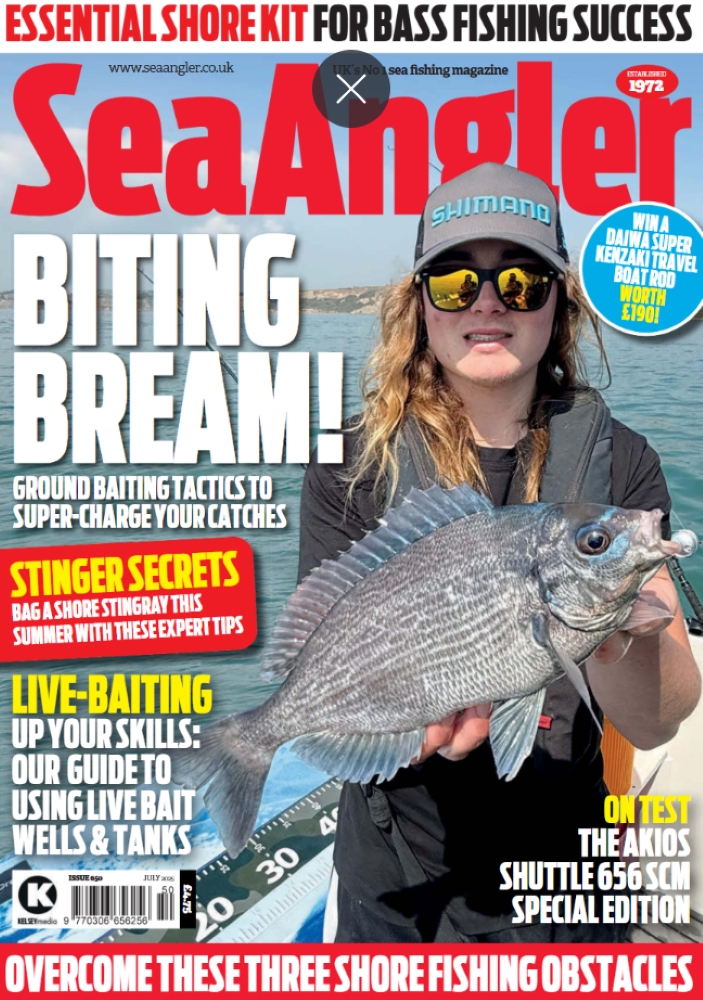Mackerel bait will catch just about every fish in the sea, so why don’t we exploit its full potential? Whole or filleted, as flappers or strips, its sheer versatility puts other baits to shame, explains Steve Walker.
Mackerel bait will catch just about every fish in the sea, so why don’t we exploit its full potential? Whole or filleted, as flappers or strips, its sheer versatility puts other baits to shame, explains Steve Walker.
If the mackerel were an endangered species we’d treat it with more respect. It’s a beautiful swashbuckling fish, a mini-version of the bluefin tuna so prized by game anglers, and a predator in its own right.
Like the tuna it can regulate its body temperature to some degree, so it’s not strictly cold-blooded – something anyone who’s ever fished for mackerel on light spinning or float tackle will appreciate. They just don’t know when they’re beaten.
This strange hotheaded property gives them energy and stamina, but is responsible for their ‘going off’ as soon as your back is turned. All that blood and Omega 3-rich oil is not going to stay fresh for long, which is why mackerel are still the only fish permitted to be sold in London on a Sunday.
The fact remains, mackerel are cheap and plentiful, and their very familiarity means we don’t take full advantage of their potential as an all-round bait.
Few fish, even those with specialist feeding habits, will refuse mackerel in its various guises. Strips, chunks, fillets or even the whole fish, depending on the size of the quarry, are snapped up by everything from the largest shark to the smallest dab, and a less obvious use for mackerel strip is as a cod bait, particularly from the shore.
Success in chunks
We have become brainwashed into thinking that worms, crabs and squid are the only hookbaits cod will look at, but it’s not so. Several times I have seen fresh mackerel out-fish other baits for winter cod from my local piers, not just as a cocktail with worms but as a big, fresh solo chunk. It seems to sort out the bigger specimens, too, and the only real reason it does not catch more cod is that relatively few anglers use it.
Frozen or iced mackerel from the supermarket is fine for dabs and whiting, and I freeze strips cut from the tough belly to tip off worm baits for these species. The strips keep the worms on the hook and add scent and movement to pull in fish from afar.
In south-west Scotland, where I fish in summer for pollack, coalfish and bass, finger-like strips around 6in long work well under a float, freelined or retrieved slowly behind a light lead.
Larger fare is required for bottom fishing, so I freeze a few fillets in readiness for when the bigger cod move inshore from January to March. Fresh mackerel needs to be frozen very quickly to keep it palatable, so unless you need whole ones for bait it is better to freeze whole or part fillets, which go rock-hard in no time.
Fillet the fish, rinse them in fresh water and dry on a paper towel, then place the baits on a metal tray in the freezer. Once they are fully frozen, wrap them in cling film, squeezing out air bubbles, and store them in freezer bags, sucking all the remaining air out with a straw before you seal them. This helps to prevent freezer burn, and your baits will be all the better for it.
Jumbos and joeys
Theaverage size of mackerel varies greatly around our coastline. In the North East they go up to 2lb, far too big to be used whole for any shore species and probably more than a mouthful for everything except shark, ling and the larger cod. Instead, these jumbo mackerel tend to be fished as fillets or as flappers, with the backbone cut out. In south-west Scotland, on the other hand, joey mackerel weigh only a few ounces and can be used whole for most species from boat or shore.
Mackerel is the toughest and most obvious oily fish to use as bait, but others can be almost as good or, occasionally, even better. Herring are readily available from supermarkets and fishmongers, while live specimens are caught in large numbers off some North East piers by anglers feathering for mackerel.
A herring has more scent than a mackerel but it is a lot softer and unless you are using it whole it will need to be tied on to the hook. As it breaks down in the water it generates a trail of fine fleshy particles, as well as an oily scent trail, and I find that for whiting it outfishes mackerel almost every time. I also prefer it to mackerel when making rubby-dubby.
Mashed sardines are good for groundbaiting, too. The bigger 8in-12in specimens, known as pilchards and bought frozen from supermarkets, are even softer than herrings, and cannot be cast very far, so they make a better supporting cast than a hookbait.
Because mackerel is so plentiful, other oily fish tend to be well down the list of bait preferences, but those willing to experiment could be surprised.
Prime cuts
Every angler should carry a sharp filleting knife because it is always better to cut a piece of bait from a fillet than hack away at a whole fish.
A couple of long strips can be cut from the belly flesh and then trimmed to a suitable size. One or two bigger pieces, or several smaller diagonal ‘lasks’, can then be cut from the main body of the fillet and used as bait for the bigger species.
Waste not, want not. Whenever I use mackerel the head, guts and tail go into the water to lay down a scent trail. When I am after mullet any remaining flesh on the filleted backbone is scraped off and mixed with bread to form groundbait. Garfish, pollack, coalfish and wrasse all respond to this stuff, too.
So next time you haul up a string of feathered mackerel, think what a priceless resource is dangling before you. The head, the tail, the whole damned fish – like the proverbial backyard pig, you needn’t waste one bit of it.
 A mackerel flapper is a great bait for conger eels
A mackerel flapper is a great bait for conger eels
Strips of mackerel can be added to feather rigs
 A mackerel fillet
A mackerel fillet
A small segment of mackerel on a float rig







